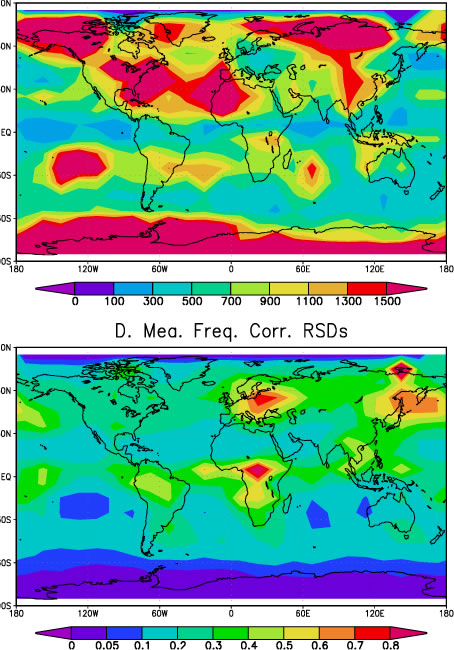Posted on 30 November 2010
The objective of this project was to investigate mechanisms of leakage in the near-surface, the impacts on ecosystems and humans, and the development and testing of near-surface monitoring techniques. The work in this project focussed on a small number of test sites investigated jointly by several research partners applying a variety of methods including:
Remote sensing: Test flights were carried out at Keyworth, U.K., and Latera, Italy, for the direct detection of CO2 using SWIR Hyperspectral methods. Further airborne hyperspectral, orthophoto and LIDAR data were collected at Latera to extend the study of potential seasonal variations of CO2 effects on vegetation. Data collected were used to develop novel interpretation algorithms for identifying vegetation responses to CO2.

Images taken at different growing seasons by a Lidar (Light Detection And Ranging): in colours, surface height ranges.
Soil gas monitoring: Technique development was continued with testing of new methods of rapid survey and continuous monitoring. Mobile IR laser methods were successfully trialled at Latera and Laacher See and detected known and previously unknown gas vents. A weather station was deployed at both sites to aid data interpretation. An eddy covariance tower was installed at Laacher See to provide continuous monitoring of CO2 flux. These measurements of CO2 concentrations, isotopes, trace gases and gas fluxes were also made in support of ecosystem effect studies at Laacher See and to examination of fault-controlled gas migration at a newly discovered exposure at Latera.
Underwater monitoring of CO2-bearing fluids in marine and lacustrine environments, with buoy-mounted and submersible systems, remote-controlled vehicles and scientific divers.
Development work and testing of the buoy-mounted system in the Gulf of Trieste was continued. Concentration of dissolved and gaseous CO2 and CH4 were low but could be measured, and seasonal variations were observed.
At Panarea, Italy, the influence of natural gas vents on the surrounding water masses was investigated by divers carrying multiprobe sensors for mapping of sea water properties such as pH. Nutrient concentrations were measured at three different water depths along a transect across a Black Smoker. Particularly high concentrations of NH4+ and Si(OH)4- were found at the sea floor where major CO2 emission took place.
At the Laacher See gas emissions on the lake bottom were surveyed using an echosounder and a remotely-operated vehicle equipped with a camera to relate observed acoustic anomalies to the presence of gas plumes in the water. This way, several gas vents with diameters of several metres were located at the lake floor. The water column was characterised by recording depth profiles of e.g., pH and redox potentials.

Impacts of CO2 on terrestrial and marine ecosystems: The investigation of the natural analogues delivered knowledge on the characteristics of CO2 seepages including their spatial and temporal variations. Studies into these variations as well as investigations of the underlying processes contribute to an understanding of the migrating gas and its environmental impacts. In this regard, they contribute very much to the evaluation of possible long-term effects should any leakage occur from CO2 storage sites.
Work was focussed on the Laacher See and involved ecological, geochemical and mineralogical assessments of nearby gas vents and springs. The effects of CO2 were examined on the flora, invertebrates (worms) and microbial communities. These studies built on the gas surveys, and tried particularly to estimate the effect of CO2 seepage on the fitness, abundance and diversity of individuals and/or communities.
At Panarea, the abundances of viruses and bacteria were determined along a transect across a Black Smoker. Within 50 m from vent centre virioplankton abundances were 3-10 fold lower compared to the control station leading also to reduced virus:bacteria ratios.
For more information please contact: Johnathan Pearce at the British Geological Survey
